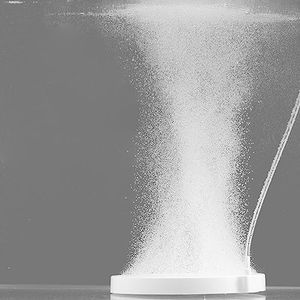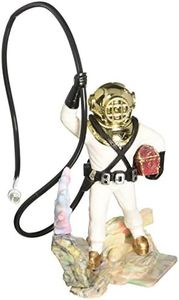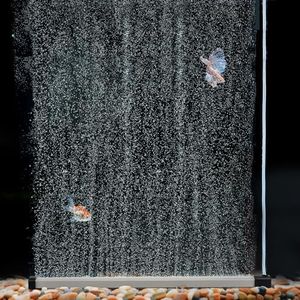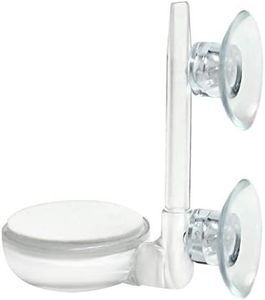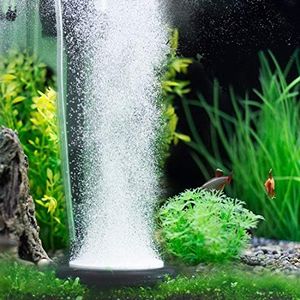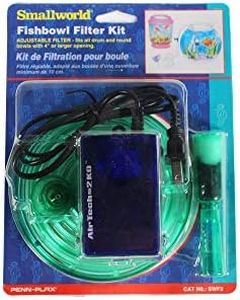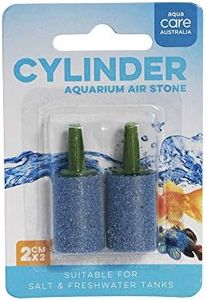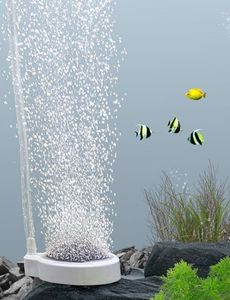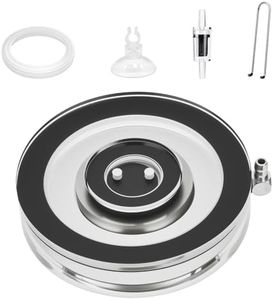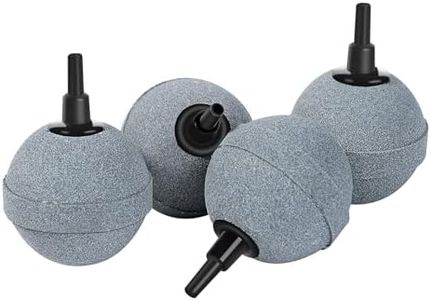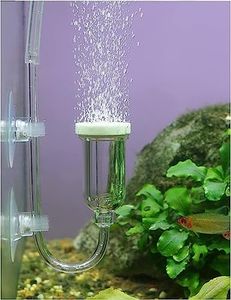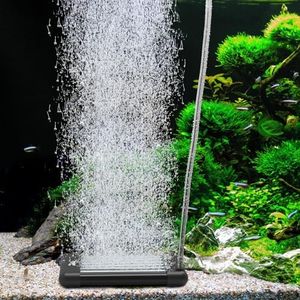We Use CookiesWe use cookies to enhance the security, performance,
functionality and for analytical and promotional activities. By continuing to browse this site you
are agreeing to our privacy policy
10 Best Aquarium Air Stones
From leading brands and best sellers available on the web.Buying Guide for the Best Aquarium Air Stones
Choosing the right aquarium air stone can make a big difference in the health of your fish and the appearance of your tank. Air stones help by breaking up air into tiny bubbles that improve oxygen exchange, circulate water, and enhance the visual appeal of your aquarium. When selecting an air stone, it’s important to consider the size of your tank, the type of fish and plants you have, and how much aeration or decoration you want. Understanding the key specifications will help you make a choice that fits your specific set-up and goals.Size and ShapeThe size and shape of an air stone determines how many bubbles it produces and how they are spread in the water. Larger or longer air stones create a curtain of bubbles, improving oxygen levels over a wide area, while small round stones release fewer bubbles in a concentrated spot. There are also other shapes, like discs or wands, to fit different parts of your tank. To choose the right one, think about the size of your aquarium and the look you want. For big tanks or heavy stocking, longer or larger air stones can circulate more air, while smaller stones work well for tiny tanks or as decorative accents.
Bubble SizeBubble size refers to how large or fine the bubbles created by the air stone are. Fine (micro) bubbles provide more surface area, resulting in efficient oxygen transfer but can be gentler for delicate fish and plants. Larger bubbles move more water and make more noise, but may disturb sediment or frighten sensitive fish. Your choice depends on your tank’s needs—go for fine bubbles if you have sensitive or small fish and want quiet operation, or larger bubbles for dramatic decoration or stronger water movement.
MaterialAir stones are typically made from materials like ceramic, glass, or sanded stone. The material affects durability, how easy it is to clean, and bubble production. Ceramics often create finer bubbles and are long-lasting, while soft stones may be cheaper but wear out faster or clog more easily. Think about your maintenance routine: if you want something easy to clean and built to last, ceramic is a good pick, but softer stones work if you don’t mind replacing them more often.
Compatibility with Air PumpNot all air stones work with every air pump. Each stone has a certain air flow requirement, which is usually measured in liters per minute (lpm) or gallons per hour (gph). A large or porous air stone needs a stronger pump to push enough air through and get good bubbling. To match them up, check the recommendations on your air pump and compare with the air stone’s needs; having a compatible pair ensures efficient aeration and avoids straining your equipment.
Ease of CleaningAll air stones eventually get clogged with algae or mineral deposits, leading to reduced performance. Some are easier to clean than others, like those you can soak, scrub, or boil to restore. If you want low-maintenance equipment, look for air stones that are known to be easy to clean or even dishwasher-safe, so you can keep your tank healthy with less hassle.
